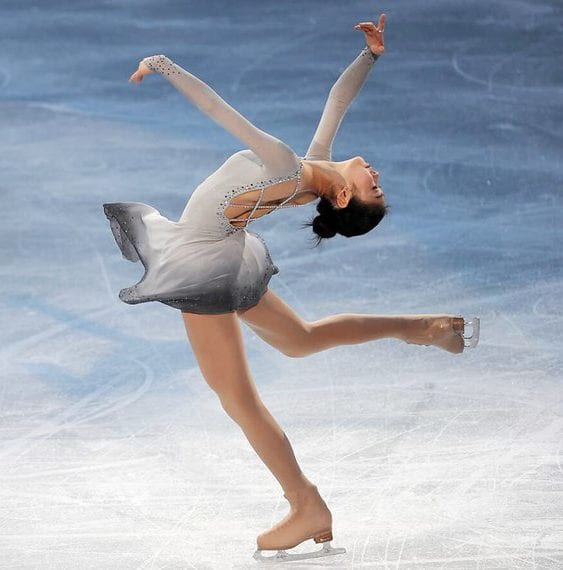Goal 3: Demonstrate advanced competence in interprofessional collaboration and leadership.
AOTA Standards of Continuing Competence: Standard 3. Interpersonal Abilities and Standard 5. Ethical Reasoning.

In figure skating, the layback spin is a very advanced position requiring exceptional balance on the front of the skate blade while arching backwards and reaching towards the sky. This represents my achievement to take on new challenges with increasing risk for both professional and personal development. Leadership development, like the layback spin, takes a long time to master and I acknowledge that it is still a work in progress. During the NYU OTD program, I built my knowledge of leadership and developed the confidence to be part of a research team. I realized how I can contribute to the next generation of OT professionals embodying these leadership skills.
My three artifacts for Goal 3 demonstrate this advanced competence; each focusing on a different aspect of leadership. Artifact 1 is a published research study completed in collaboration with surgeons and OT colleagues. Artifact 2 is a paper about the interpersonal leadership abilities that I developed while working on this research study, and while presenting and mentoring colleagues. I experienced both professional and personal growth during the completion of Artifacts 1 and 2, which lead me to Artifact 3, an academic cover letter I can use to pursue an adjunct professor position in the near future. This will satisfy my desire to contribute to the next generation of OT professionals, furthering my interpersonal leadership abilities.
Artifact 1 – Publication: Hand Function Following Simulated Fusion of Thumb MCP and IP Joints
Artifact 2 – Interpersonal Leadership Abilities
Artifact 3 – Academic Cover Letter
Reflections
Participating in a formal research study was an eye-opening experience for me, especially since my collaborators broadened from OTs to include surgeons. I learned that it takes a tremendous amount of planning and meetings to standardize the methodology between the authors, meet the IRB requirements, and to recruit research participants. Because I am a full-time clinician, there could be no interference in patient care and it was understood that we would have to do this outside of work hours. Unfortunately, it is not practical for me to do this again, while carrying a full-time caseload. I know now, that I need to release time to be able to participate in this type of project.
I was surprised by peoples’ interest in participating in our study. Many of the participants wanted me to email them the results once published. It was a common statement that they were “happy to contribute to science”; and this relieved some of the anxiety I had by asking people to do this work. It also helped that most were able to participate on their lunch hours.
One of the surgeons recommended that we write a grant to cover the costs for orthosis materials, statistician services, and standardized assessment kits. I took the lead on organizing a grant submission to the American Society of Hand Therapists including contributions from the five other team members; the principle investigator who was a resident surgeon, a hand surgeon, a statistician, and two OTs. The grant application was rejected and that feeling of failure still lingers with me. In addition, our first submission to the Journal of Hand Surgery was rejected, even after revisions. But the surgeon’s attitude was something I want to model. His attitude was ‘this is a gift’. In essence, he was saying that they made recommendations and we learned how to write for future applications.
The thing is that once you do it once, it is not so scary to do the second time. This was true both for the study itself and the process of submitting an article for publication. I need to remember that there will always be another journal, magazine, or periodical that will be interested in our results. That’s when I learned that sometimes, acceptance into journals is not just based on the strength of the study, there can also be political ideologies such as presenting a certain point of view. It also depends on the views of the reviewers and their impression of the importance of the topic and the strength of the research. It really depends on finding the best match with the journal.
Our study may have been too therapy focused for a hand surgery journal and not therapy enough for a hand therapy journal. I will keep this in mind the next time I think about participating in a research study.
With respect to interpersonal leadership abilities, I would like to add that over the course of my 23 years as an occupational therapist; I pursued my competency in task performance with passion, culminating with the desire to pursue advanced competency in the NYU OTD program. The NYU OT Leadership course was instrumental in teaching me how to reflect and take action to change interpersonal behaviors; so that I could grow as an authentic leader. My willingness to share and to do extra for the OT profession transferred to my willingness to share my successes and failures with people. Thus, my interpersonal relationships have improved, which has not only improved my overall happiness, but also establishes a legacy of helping patients through others.
